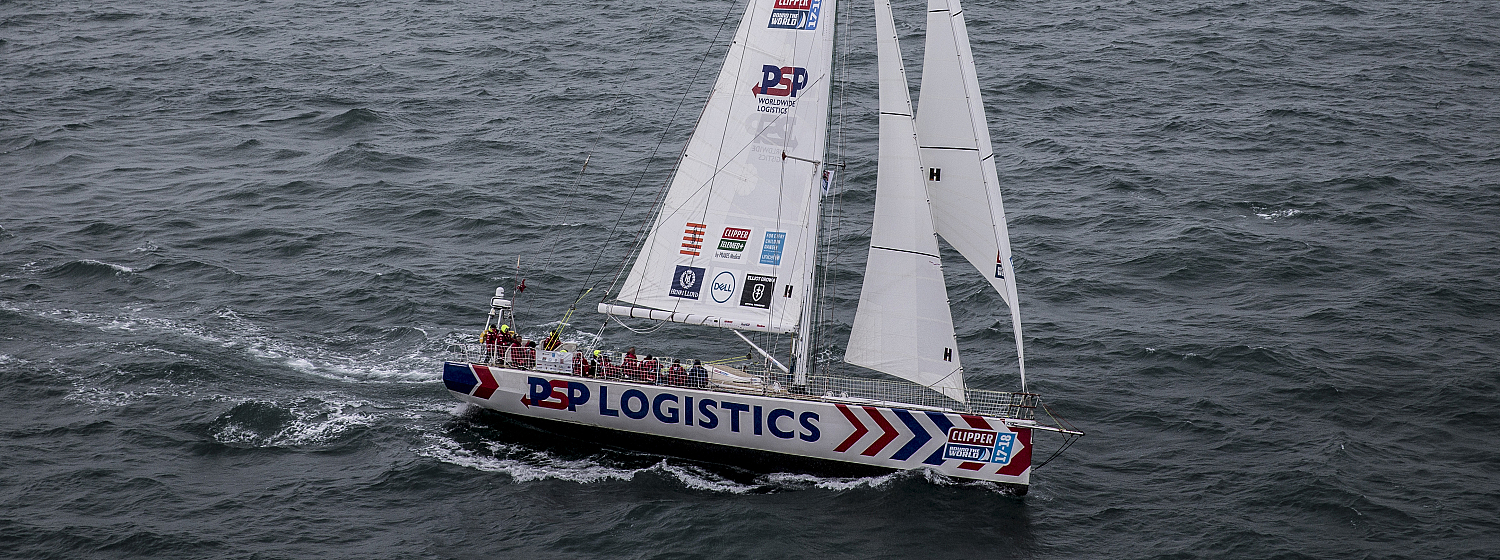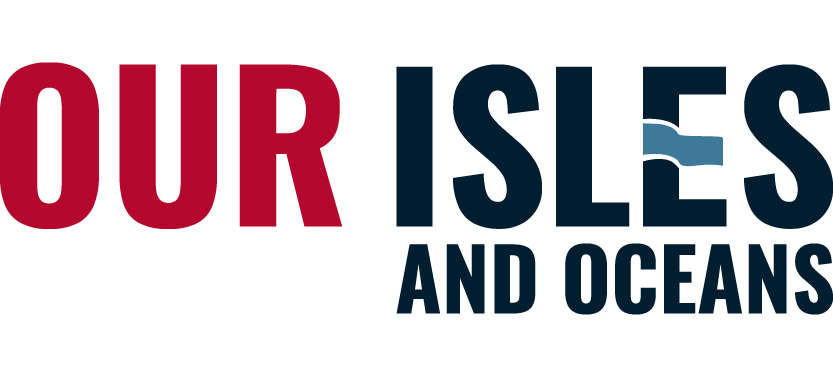Race 2 - Day 7
Crew Diary - Race 2 Day 7: Punta del Este to Cape Town
11 October
Back to Reports
View Team Page
Team PSP Logistics is back and racing! 6 days after our collision with a whale, a mammoth effort by the Clipper Race shore crew and people of Uruguay we have made it back to the same Lat and Long to begin again. The smiles and cheers from the team are heartwarming.
Our return to Punta del Este was somewhat disheartening, but the welcome we got put it right. Clipper shore crewman Jay was onboard before we tied up. The Mayor's assistant took us out for dinner to an Asado restaurant and put us up in a hotel. The people of Punta Del Este welcomed us back, at Capi Bar and Restaurant, the staff were still wearing supporters wristbands, rental car agents asked how repairs were coming along, retail staff asked Julie if she "had collided with the whale?" We made the most of our time there, and without the fleet and supporters we had lots of time to bond as a team and be treated as royalty by the friendly locals.
The team is strong and philosophical about the incident. We have lost two people for this leg due to the delays. James Hetherton having spent a lot of his time checking the bilges on Leg 1 decided to fly home and check his own bilges and is meeting us back in Cape Town. Mike Fenton just ran out of time and family commitments take preference over what is essentially now a delivery rather than a race which is what any of us would have done in his situation. These guys made Leg 1 memorable and we miss them already. We have a couple of people for whom this is their only leg, Sucheta Jadhav and Maggie Tsai - these two are real troopers holding their heads high and sailing hard.
What we will never know is if our tactics for Leg 2 would have paid off. Some people on social media noted we were on a different course out of Punta Del Este, due south rather than east. We had planned to miss the wind holes the fleet have been encountering over the last few days by pushing down to the 48th parallel. Unicef looked to be tracking with us and we were saddened when they opted out and headed back to the rhumb line to join the fleet as this would have been the only way to know if the course paid off.
For me personally, I joined the Clipper Race with a few objectives:
1. Push myself out of comfort zone (that was achieved in the first 24 hours of the leg 1)
2. Get a podium place (we snuck in the back door to Punta for 3rd)
3. Learn to sail and develop good seamanship skills to enable me to deal with situations.
Number 3... so what better way to learn what to do when hitting an object at sea... with someone else's yacht, with first class safety systems in place, an experienced skipper and amazing shore crew. The other thing we learnt was that we can pull together as a team, play to our strengths and get a job done.
David Kemp was at the helm of PSP Logistics when the collision happened and confirmed that we had made contact with a whale. At the time we were preparing to reef the main after a sudden increase in wind speed, the true wind was 35 knots and apparent wind 22 (true wind plus or minus our speed and a factor for angle, in this case we were doing 12 knots on a broad reach). I was standing on the mast pegs ready with a handy billy and had a clear view of the whale diving away behind us.
The collision was on the starboard rudder. As we were sailing a port broad reach the yacht was reasonably flat prior, however immediately after impact steering became difficult and the yacht pulled to windward. This did two things, first it increased the apparent wind as we were no longer sailing with the wind. It also meant that the undamaged port side rudder was the windward rudder and so was no longer in the water and hence pretty ineffective. Through all this, David Kemp kept his cool and handled the yacht safely for all on board.
The bow team raced forward to secure the Yankee 2 (the apparent wind was now around 35 knots) and with no downhaul on this sail it took all the energy of five people to get on deck.
While this was going on, Dave "Engines" Wilson dove into the lazarette. What he saw was the starboard rudder swinging and rocking on an angle with the deck bearings and part of the deck still attached. Using the large wrench he disconnected the port side of the tie bar (which runs between the two rudder shafts and keeps both rudders working together) to give steerage back to the helm.
Once that was done the damaged rudder still connected to the tiebar began thrashing around and risking more damage. Then to compound things the seal boot was destroyed and damage was found to the hull with water pouring in. So the rudder was pulled back into position using a handy billy and sail ties which stopped the movemennt and water ingress.
Next was a large hole in the hull, this was patched using 100x100mm timbers cut to length and wedged between the hull and deck. Again this stopped more water by pushing the hull back into place decreasing the flex of the damaged area.
Dave can't remember much apart from this, but as he worked team PSP Logistics cleared all items stored in the Lazarette and began bailing. With the steering recovered we tacked to a starboard tack putting the working rudder into the water which gave steerage and we motored west. We also reefed the main down to number 3 position, and put up the storm jib. Things calmed down after this as we motor/sailed towards Argentina and into the light airs we had previously been racing to get ahead of.
Jules did what she does best and found all the food that would perish during repairs and her and Matteo whipped up an amazing meal. Good hot food and a debrief makes everything better!
So the damage was: the rudder was first bent just above the lower bearings until the pressure was too much and the deck cup with bearings was ripped down into the lazarette. This crushed the bearings and bent the quadrant which were both replaced. What had happened under the yacht was that the trailing edge of the rudder was kicked back into the underside and punctured the hull. If you imagine that the rudder is a long rectangle which sits centimetres from the underside of the yacht, the shaft it is attached to is on the leading edge, so any impact at the bottom causes the trailing edge to pivot into the hull. What was either fortunate or good design was that the impact zone hit a stringer (beam), if this had not been the case I suspect that the lazarette would have been a lot harder and wetter place for Dave to recover the steering.
The rudder itself was damaged and had to be rebuilt. But first the shaft had to be straightened. In Montevideo, a 100 ton press attempted to straighten but packed it in so the Navy came good with a 1000 ton press which did the job on a Sunday. The bearings were flown in from the UK by non-other than PSP Logistics. Unfortunately these were reported lost by airport staff... however, a quick phone call to say the head of the Navy and Mayor of Punta Del Este were waiting these urgent parts saw them suddenly recovered and delivered. The newly made rudder was dropped into the water and floated into place whilst we rigged the sails and stowed gear. It all came together like clockwork.
Apart from David K on the helm and Dave W fixing the steering, I have not mentioned names because everyone worked super hard on the sails, the bilges, food, crew well being and recovery plans. Considering how badly wrong it could have gone everyone kept their cool. I think this was helped greatly by the calmness of Captain Roy "Iceman" Taylor. But also a massive credit to our team - it was an amazing experience to be part of (but not one I wish to repeat!)

